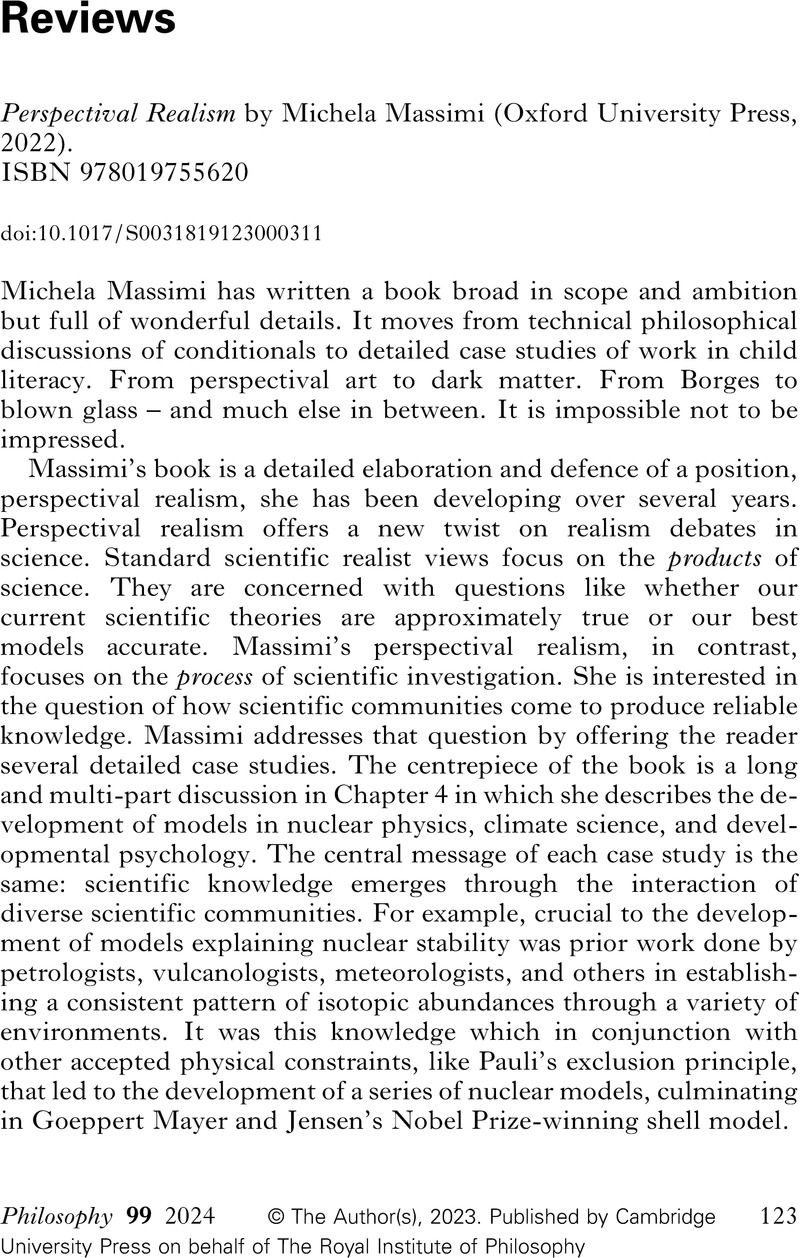No CrossRef data available.
Published online by Cambridge University Press: 31 October 2023

1 Many thanks to Michela Massimi for reading a draft of this review and correcting mistakes both large and small. Any remaining errors are, of course, entirely my own.